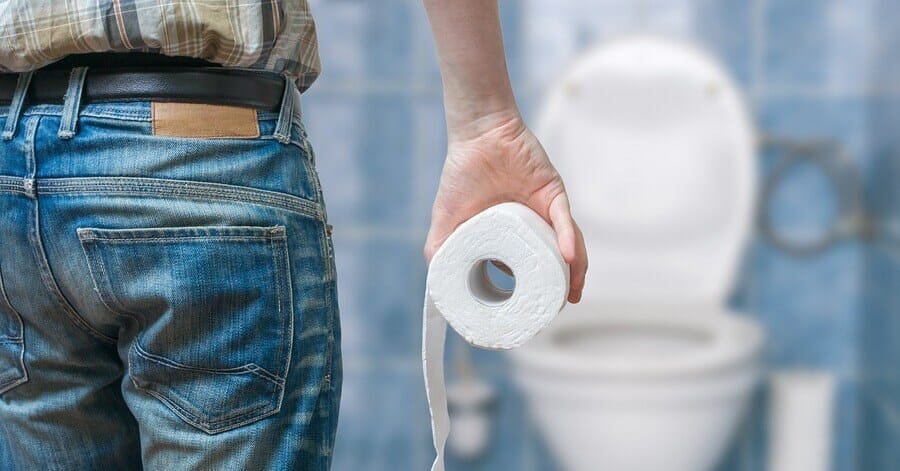
Piles or Hemorrhoids: Causes, Symptoms, Diagnosis and Treatment
Time to read 5 min
Time to read 5 min
If you have piles, you will experience swollen veins in the lower anus and rectum. It causes localized inflammation of other tissues. Piles are also known as hemorrhoids.
Piles affect many people, including females as well. In women, piles occur when the veins in the rectum or anus get swollen and inflamed. This condition causes pain and extreme discomfort. In women, various factors like pregnancy, sedentary lifestyle, obesity, and constipation can be the reasons for piles.
For females specifically, piles can be more uncomfortable, leading to pain and discomfort during menstruation, pregnancy, and childbirth. However, with proper treatment, piles can be cured.
Piles or hemorrhoids can cause noticeable symptoms in people over 50 years of age. However, the symptoms vary according to different people. This post will discuss the causes, symptoms, and treatments for piles.
Piles affect both men and women. Pregnancy increases the risk of developing piles in women due to the pressure on the veins in the rectal area. Also, some other reasons are a sedentary lifestyle, a low-fiber diet, and obesity.
The symptoms of piles in women mainly include pain, bleeding, itching, and swelling around the anus. To cure this problem, your doctor may suggest changes in lifestyle, topical medications, or surgical procedures. However, the treatment procedures depend on the severity of the condition. You must consult a healthcare professional for proper diagnosis and treatment.
In most cases, piles occur due to increased pressure in the lower part of the rectum and anal cavity. It causes the veins to bulge out and swell into lumps. Some common causes of piles in females are:
Piles in females have mild symptoms that usually resolve on their own. But if you ignore the symptoms of piles, they can be dangerous. Some common symptoms of piles in females are:
Except for surgeries, there are some over-the-counter medicines, home remedies, and dietary changes that help to manage the symptoms of piles.
Non-surgical methods
Sitz bath: If you have piles, you must soak the affected area in warm water for 10 to 15 minutes for 2 to 3 times a day. It helps to improve blood flow and relaxes the muscles in and around the anal area.
Stool softeners: These particular medicines help to relieve constipation and make it easier to pass bowel movements. It helps to reduce the risk of straining and further irritation in the anal area.
Over-the-counter treatments: You can buy ointment containing hydrocortisone. It helps to relieve pain and discomfort quickly. These creams cure the area within a couple of days.
Pain relievers: Over-the-counter pain relievers such as acetaminophen help to relieve pain in the anus.
Ice packs: Applying a cold compress helps to reduce swelling of the anus and provide relief.
Piles in women can be categorized into different types depending on the location and severity of the swollen veins around the anus. The different types of piles in women are:
Internal hemorrhoids: This type of pile occurs inside the rectum. Thus, it is not externally visible. You can't experience any noticeable symptoms. Usually, these piles get cured on their own.
External hemorrhoids: The swollen lumps around the anus are visible in this type of pile. Hence, the external piles are very uncomfortable. These piles cause pain during defecation, sitting, or in your daily physical activities.
Prolapsed hemorrhoids: These hemorrhoids are also known as internal piles. Depending on the severity, these types of piles can be categorized into the following grades:
Thrombosed hemorrhoids: A thrombosed hemorrhoid develops a thrombus within itself. This condition appears at the advanced stage of piles.
In conclusion, we can say that piles are a common condition that affects women. This condition can be uncomfortable and painful but they are treatable. By making some simple lifestyle changes and following the non-surgical treatment options, you can effectively manage piles and improve the quality of your life. If the situation worsens, you must seek medical attention to prevent potential complications.
Grade I piles or hemorrhoids, are the first stage of piles. In this stage, the lump can't be seen or touched from the anus.
If you have piles you will experience some symptoms that include:
Yes, in most cases, piles get recovered on their own within a few days. But in severe cases, you may need medical attention.
Yes, adopting a healthy lifestyle will surely reduce your risk of developing piles. Make sure to eat more vegetables and fruits and drink plenty of water and fluids. Consuming fiber-enriched foods will make the stool softer and easier to pass. It will prevent piles from reoccurring.
* *Medical Disclaimer - The following information is for educational purposes only. No information provided on this website, including text, graphic, and images, are intended as substitutes for professional medical advice. Please consult with your doctor about specific medical advice pertaining to your condition(s).





